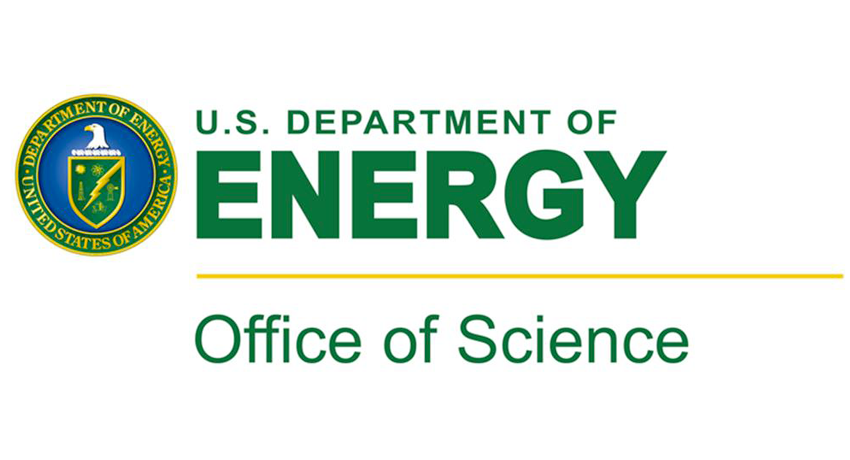Credit: U.S. Department of Energy. All Rights Reserved.
UNIVERSITY PARK, Pa. — Five faculty in Penn State’s Department of Materials Science and Engineering (MatSE) are members of research teams selected for two recently funded Energy Frontier Research Centers. The awards, announced on Aug. 25, are part of a $540 million initiative by the U.S. Department of Energy (DOE) to invest in clean energy technologies and low-carbon manufacturing to help the U.S. achieve net-zero emissions by 2050.
“Meeting the Biden-Harris Administration’s ambitious climate and clean energy goals will require a game-changing commitment to clean energy — and that begins with researchers across the country,” said U.S. Secretary of Energy Jennifer M. Granholm. “The research projects announced today will strengthen the scientific foundations needed for the United States to maintain world leadership in clean energy innovation, from renewable power to carbon management.”
More than $400 million of the funds will go toward establishing and continuing 43 Energy Frontier Research Centers, which bring together multi-disciplinary scientific teams to tackle the toughest scientific challenges preventing advances in energy technologies.
Susan Sinnott, department head and professor of materials science and engineering, will serve as the deputy director for the Fast and Cooperative Ion Transport in Polymer-Based Electrolytes (FaCT) EFRC. It will receive $11.5 million over four years to focus on polymer electrolytes for next-generation energy storage devices such as fuel cells and solid-state electric vehicle batteries.
“The collaborative research taking place in FaCT will advance the fundamental science of ion and proton transport in new solid-state electrolyte materials,” said Sinnott. “This advancement promises to enable safer and longer-lived batteries for electronic devices and other applications.”
The center is led by DOE’s Oak Ridge National Laboratory and additional Penn State faculty include Ralph Colby and Michael Hickner, both professors of materials science and engineering and chemical engineering, and Wesley Reinhart, assistant professor of materials science and engineering and Institute for Computational and Data Sciences co-hire.
Faculty from the University of Illinois Urbana-Champaign, Texas A&M University, the University of California, Santa Barbara, the University of Tennessee, Knoxville and Georgia State University are also part of FaCT.
Ismaila Dabo, associate professor of materials science and engineering, is part of the research team for the second EFRC, Center for Electrochemical Dynamics and Reactions on Surfaces (CEDARS). Led by North Carolina Agricultural and Technical State University, it will receive $10.35 million over four years to focus on splitting hydrogen and oxygen from water to produce clean hydrogen for energy use.
In addition to Penn State, CEDARS also includes faculty from the Massachusetts Institute of Technology (MIT), Cornell University, Colorado University at Boulder, and DOE’s Lawrence Berkeley National Laboratory and National Renewable Energy Laboratory.
Penn State leads two of the 43 ERFCs: Three-Dimensional Ferroelectric Microelectronics (3DFeM) and the Center for Lignocellulose Structure and Formation (CLSF). Penn State also has 21 faculty on one or more EFRC research team, including 11 associated with MatSE.
3DFeM is led by Susan Trolier-McKinstry, Evan Pugh University Professor and Flaschen Professor of Ceramic Science and Engineering. 3DFeM is tackling the non-von Neumann challenge to propel radical advances in microelectronic devices, circuits and systems. The goal of 3DFeM is to enable a million-fold enhancement in interconnection between memory and logic, along with substantial reductions in the energy cost to computation. 3DFeM is in its third year of funding.
CLSF is led by Daniel Cosgrove, the Eberly Chair and professor of biology. The focus on CLSF is to develop a nano- to meso-scale understanding of cellulosic cell walls, the energy rich structural material in plants, and the physical mechanisms of wall assembly, forming the foundation for new technologies in sustainable energy and novel biomaterials. CLSF has been continuously funded since the inception of the ERFC program in 2009.
DOE’s EFRC program has become an important research modality in the department’s portfolio, enabling high impact research that addresses key scientific challenges for energy technologies. Funded by the Office of Science’s Basic Energy Sciences program, the EFRCs are located across the United States and are led by universities, national laboratories and private research institutions. These multi-investigator, multidisciplinary centers bring together world-class teams of researchers, often from multiple institutions.

